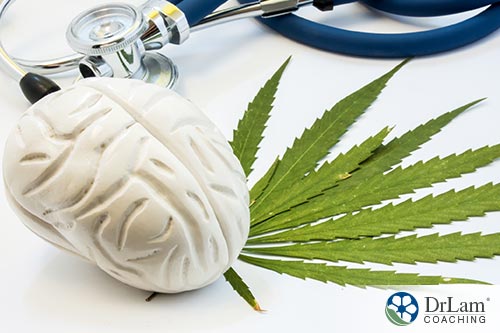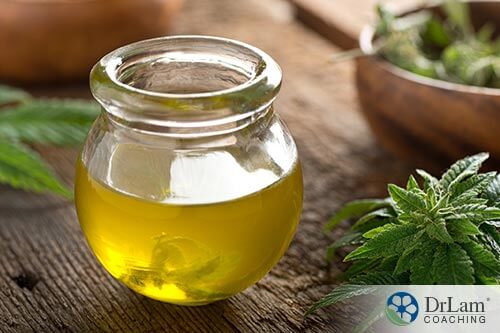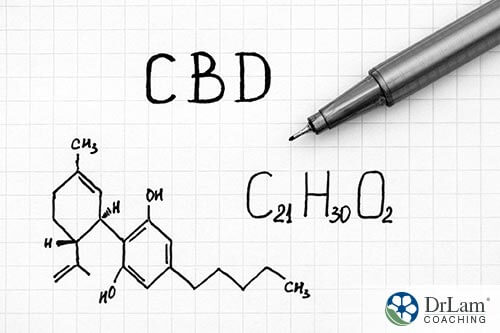 Medical use of marijuana is widespread and recent research has shown the many potential and very real health benefits of cannabinoids. The cannabinoids related to health benefits being researched are not the THC-containing parts of marijuana. In fact, the intoxicating THC compound in marijuana and the therapeutic cannabidiol (CBD) compound found in hemp are quite different.
Medical use of marijuana is widespread and recent research has shown the many potential and very real health benefits of cannabinoids. The cannabinoids related to health benefits being researched are not the THC-containing parts of marijuana. In fact, the intoxicating THC compound in marijuana and the therapeutic cannabidiol (CBD) compound found in hemp are quite different.
Moreover, CBD that appears to have many medical uses and research has suggested a number of beneficial effects for several health conditions.
Three types of cannabinoids have medical uses—two of which are natural and one is made in the laboratory.
Synthetic Cannabinoids. As the name implies, synthetic cannabinoids are compounds made in the laboratory. The effects are not as strong or consistent as natural cannabinoids and there is not much scientific evidence of their beneficial effects.
Endocannabinoids. These compounds occur naturally in your body and are ingested along with mother’s milk. The effects of endocannabinoids are similar to plant cannabinoids and as you grow, endocannabinoids are manufactured by your body, however, aging naturally decreases the amount you produce. You also lose endocannabinoids every time you eliminate toxins from your body.
Phytocannabinoids. Some of the active ingredients in marijuana are phytocannabinoids and over one hundred of these cannabinoids are found in hemp. A great deal of medical research has been prompted by CBD, along with THC, which are only two of the many cannabinoids found in hemp plants.
Based on current research, CBD has been shown to have many medical uses. However, an appropriate ratio of CBD to THC is necessary for many medical applications. Two receptors, CB1 and CB2, are most often studied. At both of these receptors, CBD acts as an antagonist, but has a low binding affinity for them. Apart from these two receptors, other possibilities for the mechanism of action of CBD are other receptors in the brain or immune system modulation of CBD.
The endocannabinoid system is postulated to be a regulator of many of our body’s processes including mood, appetite, and memory. Any deficiency in the endocannabinoid system may cause dysfunction of these processes.
As early as 2900 BC, the Chinese were using cannabinoids for medicinal purposes—they were considered to have healing properties and used to treat numerous health conditions. However, the use of cannabinoids predates Chinese written history.
The Egyptians were using cannabinoids from around 1000 B.C. to treat eye conditions, as an anesthetic when mixed with other substances, and to reduce inflammation. These substances were highly regarded in written works of that time and are even mentioned in the Bible.
In the colonial settlements of North America in the 1600s, cannabinoids were used to treat a number of medical conditions such as inflammation, menstrual issues, headaches, and insomnia. At the same time in Europe, they were widely used for depression. In the 1700s, the state of Virginia required farmers to grow hemp crops as a way of assisting state coffers and hemp was used in rope and sail manufacture during that time.
During Prohibition in the early 1900s, laws were passed prohibiting alcohol, as well as marijuana. However, around the same time, it was also being grown and used for medicinal purposes in certain areas of the U.S.
In the mid-1950s, cannabis was declared illegal and the federal government classified it as having no medicinal uses.
However, by the end of the 1970s, a number of medical organizations began looking to cannabinoids for helping cancer patients, as a means of reducing the side effects of chemotherapy. The success of these experiments resulted in several states beginning to legalize some forms of medical marijuana in the 1990s.
Endocannabinoids and phytocannabinoids are utilized in a number of health applications. Synthetic cannabinoids do not have the efficacy and strength of natural versions and are, therefore, used less often.
Research suggests much of the aging process is due to chronic low-grade inflammation. This discovery has brought with it a new term: inflammaging. This condition is a highly significant aspect of aging and a large risk factor of both mortality and morbidity in older people. This is because most, possibly all, age-related illnesses have inflammation as one of the major elements affecting both onset and progression.
Exactly how inflammaging begins and the pathway it uses to bring about and perpetuate these conditions are unknown at this time. Identifying the pathways leading to age-related illness is important to understanding the benefits of each remediation effort aimed at inflammaging.
 Aging reduces the ability of your cells to communicate with each other, which weakens your immune, nervous, and endocrine systems responses to endogenous or exogenous threats. This can lead to severe chronic conditions involving the brain and nervous system.
Aging reduces the ability of your cells to communicate with each other, which weakens your immune, nervous, and endocrine systems responses to endogenous or exogenous threats. This can lead to severe chronic conditions involving the brain and nervous system.
Compared to younger subjects, research has found that older subjects have increased levels pro-inflammatory cytokines throughout their bodies. Laboratory-tested inflammatory markers such as C-reactive protein or Interleukin 1 beta—cytokines that encourage inflammation—may be elevated and the increase in inflammation leads to inflammaging.
Your body responds to the accumulation of inflammation throughout your body by signaling to your adrenal glands. In response to the stress of inflammaging, they begin to secrete cortisol. This is the typical way your body responds to any source of stress. Over time, with continuing demands, your adrenals can no longer secrete a sufficient amount of cortisol to deal with the unrelenting stress. This brings on a condition known as Adrenal Fatigue Syndrome (AFS). With decreasing cortisol production, symptoms of AFS begin to show such as fatigue, rapid aging, reactive hypoglycemia, insomnia, and reduced exercise tolerance. You may experience difficulty regulating blood sugar levels, which may be a result of diabetes, hormonal imbalances, immune system suppression, gastrointestinal problems, or cardiovascular issues. These symptoms may be subtle at first, but for some AFS sufferers, they may develop into a debilitating condition.
Unfortunately, conventionally trained medical professionals are not always trained to spot or deal with these symptoms. The symptoms are usually approached one by one or one organ at a time, in an attempt to remediate only the symptoms themselves. This is not a comprehensive or effective method. A better way of dealing with symptoms of AFS is by considering the NeuroEndoMetabolic (NEM) approach to stress response. This school of thought considers six interrelated organ systems that respond to stress. Evaluating and addressing the interactions among these six organ systems is a more comprehensive way of dealing with AFS symptoms.
Cannabinoids have been shown to have an anti-inflammatory effect on your body. By fighting inflammation, they slow down the aging process and help you deal with any age-related chronic illness you may already be suffering from. One of the ways they do this is by reducing pro-inflammatory cytokines and controlling pathways that lead to inflammation.
Chronic pain has become an international health crisis in many developed countries. In the US, this epidemic has led to an opioid crisis as people seek relief from the unrelenting pain they are experiencing. Moreover, chronic musculoskeletal pain has also become a significant health issue in Europe, with about 25% of the elderly population experiencing pain severe enough to be debilitating. In Australia, statistics show half of the elderly population experiences debilitating pain and in nursing homes, as many as 80% of residents report having severe pain. An ABC News poll in the US demonstrated that a significant number of people have used marijuana for pain relief.
Healthcare professionals in the US face significant challenges in dealing with pain associated with cancer, neuropathic pain, and centralized pain states such as those seen with multiple sclerosis (MS). These types of pain are often not alleviated by opioids, antidepressants, or anticonvulsant drugs. Healthcare professionals are also facing increased scrutiny over their prescribing practices due to the overuse of opioids and other pain medications.
 Cannabinoids offer some hope to these professionals and people suffering from intractable pain. However, there is still significant controversy surrounding their use.
Cannabinoids offer some hope to these professionals and people suffering from intractable pain. However, there is still significant controversy surrounding their use.
A number of research studies have shown that smoking marijuana for pain relief can be effective. In one study, subjects were divided into two groups—those who smoked marijuana cigarettes three times a day for five days or a placebo control group who smoked cigarettes with no marijuana. The marijuana-smoking group reported a 34% reduction in pain compared to 17% of those smoking the placebo cigarettes. Some subjects noted infrequent side effects associated with the marijuana-infused cigarettes, such as dizziness, confusion, and sedation.
Although it is still unclear how cannabinoids affect pain sensations, a number of theories have emerged. Two cannabinoid receptors, CB1 and CB2, have been identified. The CB1 receptors are located in both the central and peripheral nervous systems, whereas CB2 receptors are mostly found in immune system tissues, including the spleen, T cells, and tonsils. One theory concerning pain relief is that the activation of CB1 receptors may influence pain perception, although the actual mechanism remains unclear. Another part of this theory concerns CB1 receptor associations with calcium and potassium channels of the body. Inhibition of these channels has been shown to have some effects on neuropathic pain.
Another theory relates to the effects of cannabinoids on serotonin receptors, which may also affect pain responses. Yet another possibility is the inhibition of prostaglandin synthesis, which mediates anti-inflammatory effects. Cannabinoid-associated inhibition of glutamate release has also been investigated in relation to decreased pain response.
Recently, a study performed on mice demonstrated that peripheral CB1 receptors are involved—rather than central receptors—suggesting cannabinoids could be used for pain relief while avoiding their psychoactive properties. Other animal studies have implicated CB1 receptors of the spinal cord in opioid tolerance and drug dependence.
When considering pain perception and alleviating pain with the use of cannabinoids, the nocioreceptors—neurons that transmit pain sensations to the brain—must also be considered. Nocioreceptors are located in both the central and peripheral nervous systems and when they are activated, the sensation of pain is experienced. How much they are activated corresponds to the amount of pain you experience. By controlling the nocioreceptors and inhibiting their activation, pain can also be controlled.
When CB1 receptors are activated by cannabinoids, they inhibit neurons at this location. Sometimes, this leads to signal cascading and downstream effects based on the information sent through these neurons. Activating CB1 receptors could inhibit these glutamatergic nocioreceptors and appears to be the mechanism through which cannabinoids affect pain perception.
Another way of theorizing how cannabinoids work to relieve pain relates your hippocampus—part of your brain that deals with memory. Memory is associated with the perception part of your pain response and cannabinoids seem to inhibit GABA-influenced neurons, thus altering your memory of adverse events and to some extent, removing the perception of pain.
Most research regarding the role of cannabinoids in pain relief and other health benefits has examined the CB1 receptor. However, CB2 receptors are also found in various parts of your body, and CB2 receptor activation also seems to lead to a number of health benefits, including pain relief without the psychoactive component of cannabinoids. However, additional research is still required to fully elucidate the effects of these receptors.
Another type of cannabinoid that may have an effect on pain is the phytocannabinoid—a plant-based cannabinoid that differs from the endogenous endocannabinoids found naturally in your body. Phytocannabinoids and their related chemicals, such as terpenes, have been found to alleviate pain safely and with minimal adverse effects.
 Cannabinoids may help to suppress inflammation by downregulating pro-inflammatory cytokines and chemokines while upregulating T-cells.
Cannabinoids may help to suppress inflammation by downregulating pro-inflammatory cytokines and chemokines while upregulating T-cells.
Research has shown that supplementing endocannabinoids and/or exogenous cannabinoids or inhibiting the enzymes that break down these compounds may significantly reduce inflammation. Therefore, cannabinoids may constitute a new class of anti-inflammatory compounds that could successfully be used to treat certain inflammatory or autoimmune conditions that are triggered by activated T cells.
The mechanism by which cannabinoids suppress inflammation is via dysregulation of the cytokines that cause inflammation, thereby inhibiting an immune response. Moreover, disrupting of the balance of cytokines made by T helper cells, Th1 and Th2, may provide an additional pathway.
The large number of cannabinoids produced by your body, as well as the larger number of exogenous cannabinoids, may lead different responses in various parts of your body. For example, some cannabinoids suppress inflammatory responses and thus protect your brain, whereas others may be produced in the gut and reduce inflammation there.
In relation to the use of cannabinoids, the CB2 receptors may be most involved in reducing inflammation since these are the receptors that affect the immune system most.
Cannabidiol (CBD) is one of the substances found in hemp and interacts with CB2 receptors. The terpenoid known as ß-carophyllene is another. Both of these substances activate CB2 receptors with no evidence of a psychogenic effect. In addition to suppressing inflammation, a number of studies suggest these substances may improve conditions like cirrhosis of the liver, osteoarthritis, and arteriosclerosis.
In addition, CBD was shown to effectively decrease inflammation and improve arthritis symptoms. In a study conducted at the Imperial College in London, CBD was found to reduce inflammation by up to 50% in mice and to have additional effects on remediating type 1 diabetes. Studies performed at G.W. Pharmaceuticals showed that CBD is effective in treating rheumatoid arthritis, bowel problems, and nausea.
 Another study carried out at the University of Mississippi Medical Center demonstrated that CBD may also decrease the impact of inflammation on oxidative stress, thus lowering the risk of damage to organs and decreasing the risk of organ dysfunction. Since oxidative stress and inflammation play a major role in several chronic conditions—such as rheumatoid arthritis, high blood pressure, metabolic syndrome, both types of diabetes, and even Alzheimer’s—these findings may lead to important new ways of dealing with these conditions.
Another study carried out at the University of Mississippi Medical Center demonstrated that CBD may also decrease the impact of inflammation on oxidative stress, thus lowering the risk of damage to organs and decreasing the risk of organ dysfunction. Since oxidative stress and inflammation play a major role in several chronic conditions—such as rheumatoid arthritis, high blood pressure, metabolic syndrome, both types of diabetes, and even Alzheimer’s—these findings may lead to important new ways of dealing with these conditions.
Other significant mechanisms through which cannabinoids may impact inflammation include stimulating apoptosis in activated immune cells, inhibiting cytokines and chemokines at sites where inflammation is present, and upregulating FoxP3+ regulatory T-cells.
No. While cannabinoids serve to minimize or alleviate pain sensations, they have also been shown to have numerous additional health benefits. They can help deal with illness and mental health issues while avoiding the typical side effects of THC.
